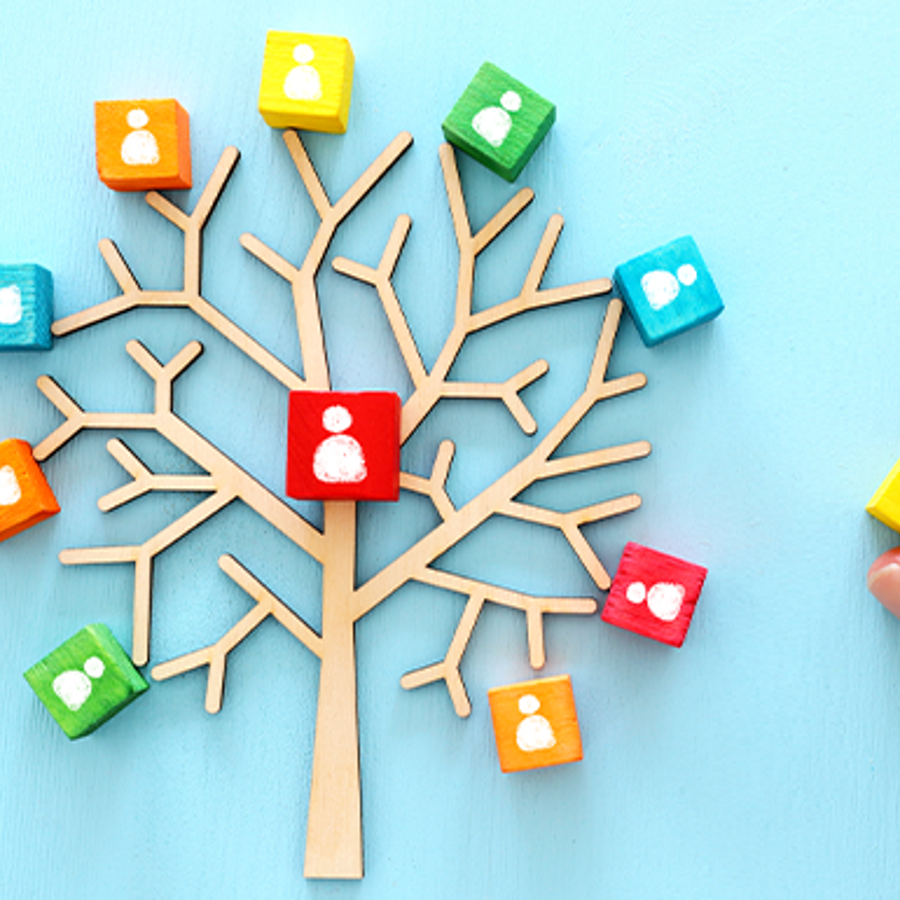
How can my mom have DNA relatives who don’t show up as related to me?
May 12, 2016

- Related Topics:
- Relatedness,
- Ancestry tests,
- Consumer genetic testing
A curious adult from Colorado asks:
"My mother and I both had DNA tests and our results turned out a bit different. She is related to someone as a 4th-6th cousin and I am not. Since she is my mom, shouldn’t we both be related to her?"
This is a great question. You’d expect that since you are related to your mom and she is related to this second person that you would be related to that second person as well.
While this is all true on a family tree, it may not be true at the DNA level. As you’ve found, it’s possible for your parent to be genetically related to someone … when you aren’t!
The reason has to do with how much DNA you share with a 4th-6th cousin. And the fact that you only get half of your mom’s DNA.
Fourth to Sixth Cousins
As a start, here is what data looks like from 23andMe for my 4th cousin:

This image represents my 23 pairs of chromosomes. Most people have their DNA arranged this way.
In this image, each pair (except for the X and the Y) are represented by a long rectangle with a pinch in the middle. So each rectangle is actually a representation of a pair of chromosomes.
The DNA I share with this relative is that little blue box on chromosome 7. That is all of the shared DNA that this test can see.
Since this is a light blue box, this means that the DNA is only on one of the chromosome 7’s in this pair. This is what they are trying to tell you with the term “half-identical.”
For the next part, I will show the pair of chromosome 7’s like this:

I have split the single rectangle into two to better represent the pair. As you can see, I have shown the shared DNA as a light blue box on one of the two chromosomes in the pair.
We Get Half Our DNA from Mom (and Half from Dad)
As I said, for the most part, our chromosomes come in pairs. One from each pair comes from mom and the other comes from dad.
This means that when we have kids, we pass only one from each pair to our child. And the one the child gets is chosen at random.
Let’s imagine that your mom has the same pair of chromosomes that I showed earlier:

So in this image, for the chromosome 7 pair, maybe she got the top one from her mom and the bottom one from her dad. The only DNA she shares with her 4th cousin is that blue box on the top chromosome.
You can probably see how you might end up not sharing any DNA with your mom’s 4th cousin.
Imagine that your mom passed the bottom chromosome down to you. Now, since this was the only bit of DNA your mom and her 4th cousin shared, you won’t share any DNA with your mom’s 4th cousin.
Here is what your chromosome 7 pair would look like:

Here your mom’s chromosome has a blue outline and your dad’s has a red one. You did not get the shared DNA from your mom because you got the bottom chromosome and your dad didn’t have any of their shared DNA to give. You have no shared chromosome 7 DNA with your mom’s 4th cousin.
Your 23andMe results might look like this:

Now the two of you look unrelated even though we know that you are through your mother!
This shows one of the limitations of DNA research. You are not going to find all of your relatives because by chance, you may not share any DNA with some of them.
It also shows why it can be important to have people as far up as the family tree as possible tested. They are more likely to share DNA with people further up and/or out on the tree.
And finally it shows why having multiple people tested in a family can be useful.
For example, imagine that instead of your mom being tested, your sister had DNA testing done. And imagine that she got the top chromosome 7.
Now you’d be able to see your relative with her DNA. Of course if your sister got the bottom one as well, then that 4th cousin would still be invisible in this analysis.

Author: Dr. D. Barry Starr
Barry served as The Tech Geneticist from 2002-2018. He founded Ask-a-Geneticist, answered thousands of questions submitted by people from all around the world, and oversaw and edited all articles published during his tenure. AAG is part of the Stanford at The Tech program, which brings Stanford scientists to The Tech to answer questions for this site, as well as to run science activities with visitors at The Tech Interactive in downtown San Jose.
 Skip Navigation
Skip Navigation
